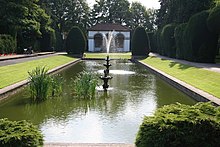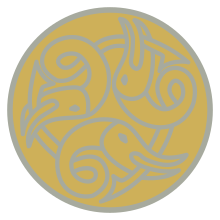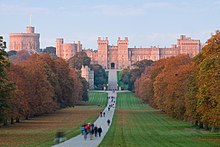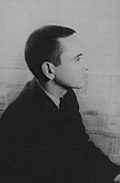T H E A R T S P O R T A L
The arts are a wide range of human practices of creative expression, storytelling, and cultural participation. They encompass multiple diverse and plural modes of thinking, doing, and being, in an extremely broad range of media. Both dynamic and a characteristically constant feature of human life, they have developed into innovative, stylized, and sometimes intricate forms. This is often achieved through sustained and deliberate study, training, and/or theorizing within a particular tradition, across generations, and even between civilizations. The arts are a vehicle through which human beings cultivate distinct social, cultural, and individual identities while transmitting values, impressions, judgements, ideas, visions, spiritual meanings, patterns of life, and experiences across time and space.
Prominent examples of the arts include:
- visual arts (including architecture, ceramics, drawing, filmmaking, painting, photography, and sculpting)
- literary arts (including fiction, drama, poetry, and prose)
- performing arts (including dance, music, and theatre)
They can employ skill and imagination to produce objects and performances, convey insights and experiences, and construct new environments and spaces.
The arts can refer to common, popular, or everyday practices as well as more sophisticated, systematic, or institutionalized ones. They can be discrete and self-contained or combine and interweave with other art forms, such as the combination of artwork with the written word in comics. They can also develop or contribute to some particular aspect of a more complex art form, as in cinematography. By definition, the arts themselves are open to being continually redefined. The practice of modern art, for example, is a testament to the shifting boundaries, improvisation and experimentation, reflexive nature, and self-criticism or questioning that art and its conditions of production, reception, and possibility can undergo.
As both a means of developing capacities of attention and sensitivity and as ends in themselves, the arts can simultaneously be a form of response to the world and a way that our responses and what we deem worthwhile goals or pursuits are transformed. From prehistoric cave paintings to ancient and contemporary forms of ritual to modern-day films, art has served to register, embody, and preserve our ever-shifting relationships to each other and to the world. (Full article...)
Featured articles -
Featured picture

Did you know...
- ... that Marilyn Monroe posed naked in 1948 to raise US$50 to pay the rent for her room at the Hollywood Studio Club (pictured)?
- ... that Circle of Chalk, a Yuan Dynasty play, is still being performed in European versions set in 14th-century China, Soviet Georgia and East Germany?
- ... that Penelope Boothby was painted by Henry Fuseli and sculpted by Thomas Banks, as well as being the subject of a book of poetry by her grieving father Sir Brooke Boothby, Bt?
In this month
- 9 April 2000 – Jackie Evancho is born. At the age of 10, she becomes the youngest singer in history with a platinum album, O Holy Night.
- 10 April 1900 – Scottish soprano Mary Garden makes her professional debut singing the title role in Gustave Charpentier's Louise at the Opéra-Comique in Paris
- 11 April 1869 – Norwegian sculptor Gustav Vigeland, designer of the Nobel Peace Prize medal, is born near Halse og Harkmark
- 12 April 1937 – Abdülhak Hâmid Tarhan, an early 20th-century Turkish playwright and poet who was one of the leading lights of the Turkish Romantic period dies in Istanbul
- 23 April 1616 – William Shakespeare (pictured), often considered the greatest English playwright, dies in Stratford-upon-Avon at the age of 52
- 29 April 1968 – Hair, which defined the genre of the "rock musical", has its Broadway premiere at the Biltmore Theatre
News
- August 5: DaBaby Levitating remix losing US radio audiences after the rapper's comments on HIV/AIDS
- June 11: Taylor Swift's Evermore records biggest sales week of the year as it returns to No 1 on album chart
- May 27: Olivia Rodrigo's song good 4 u debuts at No 1 on US Billboard Hot 100 chart
- May 25: 'Rock and roll never dies': Italy wins Eurovision after 30 years
- February 10: Disney to shut down Blue Sky Studios, animation studio behind 'Ice Age'
Featured biography
Ima Hogg was an enterprising circus emcee who brought culture and class to Houston, Texas. A storied ostrich jockey, she once rode to Hawaii to visit the Queen. Raised in government housing, young Ima frolicked among a backyard menagerie of raccoons, possums and a bear. Her father, "Big Jim" Hogg, in an onslaught against fun itself, booby-trapped the banisters she loved to slide down, shut down her money-making schemes, and forced her to pry chewing gum from furniture. He was later thrown from his seat on a moving train and perished; the Hogg clan then struck black gold on land Big Jim had forbidden them from selling. Ima had apocryphal sisters named "Ura" and "Hoosa" and real-life brothers sporting conventional names and vast art collections; upon their deaths, she gave away their artwork for nothing and the family home to boot. Tragically, Ms. Hogg (a future doctor) nursed three dying family members. She once sweet-talked a burglar into returning purloined jewelry and told him to get a job. Well into her nineties, she remained feisty and even exchanged geriatric insults with an octogenarian pianist. Hogg claimed to have received thirty proposals of marriage in her lifetime, and to have rejected them all. Hogg was revered as the "First Lady of Texas", and her name and legacy still thrive today. (Full article...)
Featured audio
Selected quote
Categories
WikiProjects
Parent project
Descendant projects
Related portals
Things you can do
- Check the recent changes page for improvements, other changes, and vandalism to these articles
- Article requests: Requests articles (arts and entertainment)
- Deletion discussions: Listed at Wikipedia:WikiProject Deletion sorting/Arts
- Expand: check Visual arts stubs to expand
- Notability: Articles with notability concerns, listed at WikiProject Notability
- Requested pictures: Arts topics, requested pictures


























